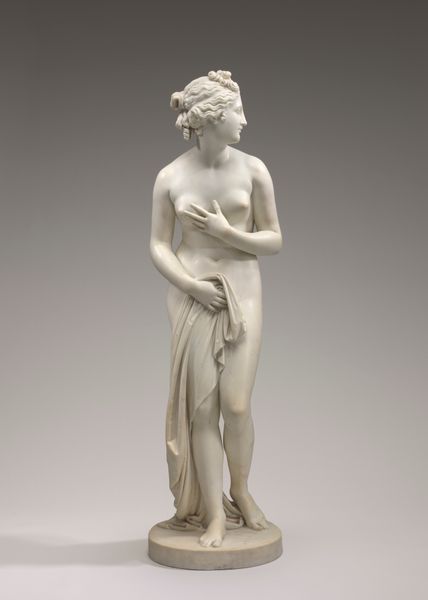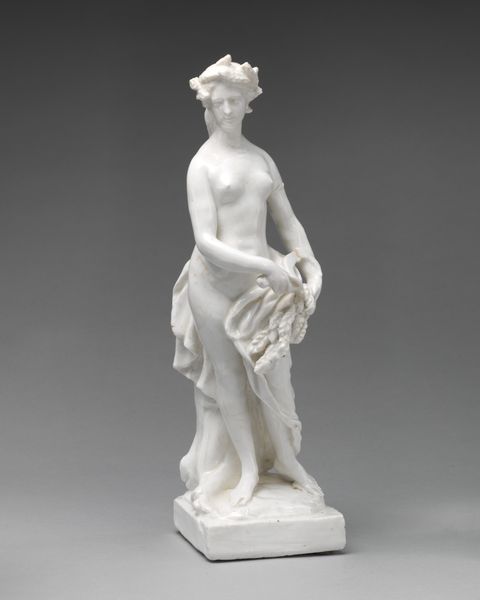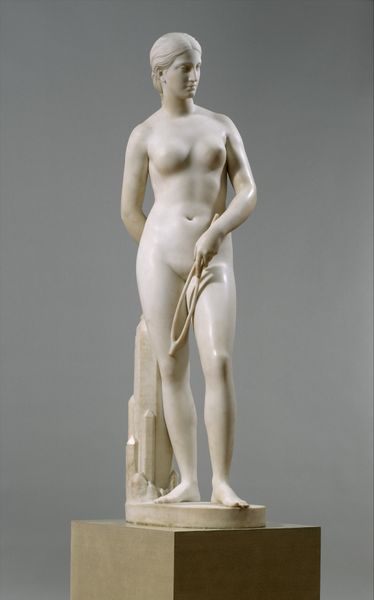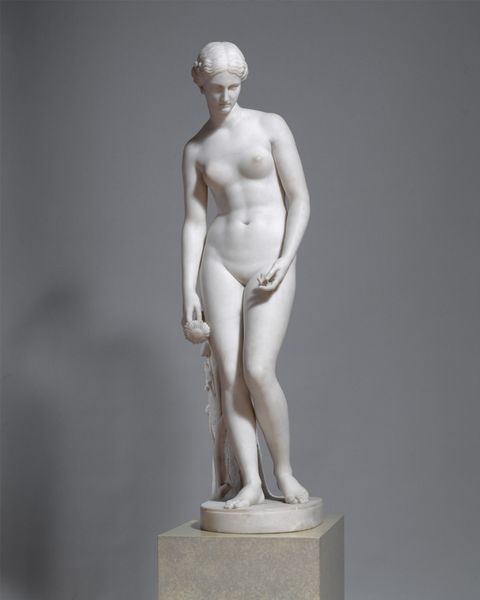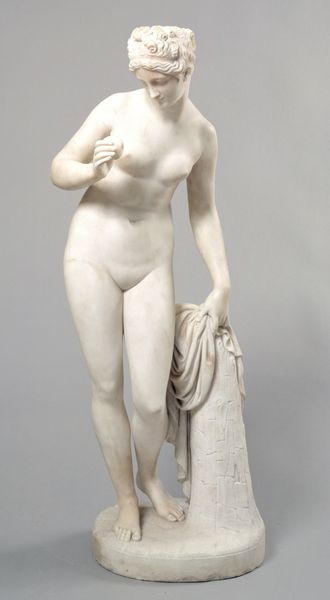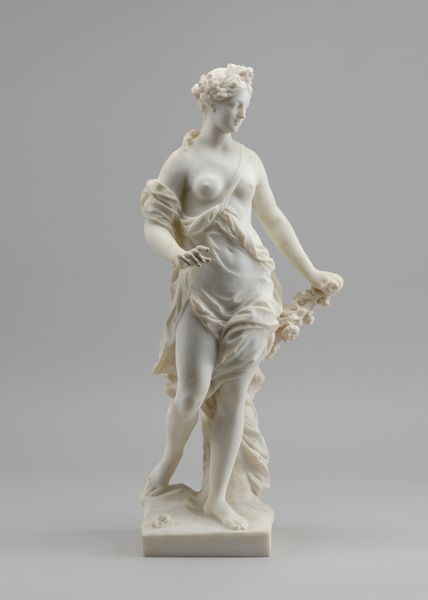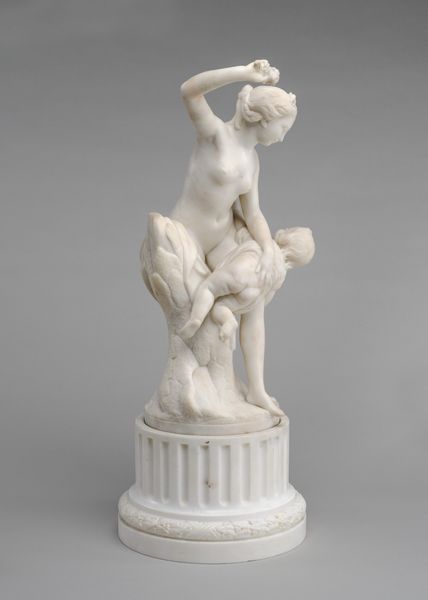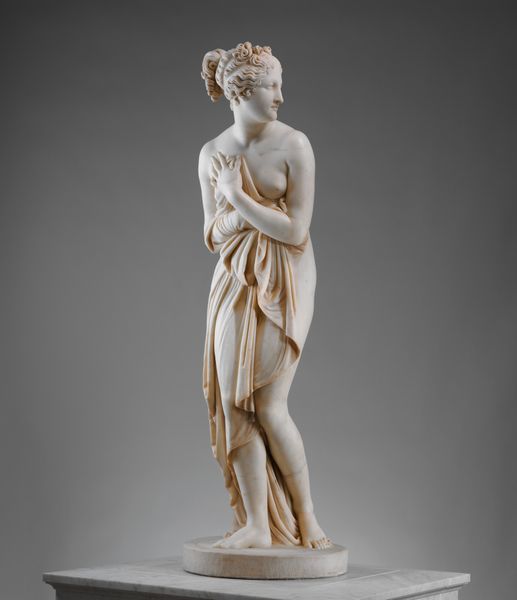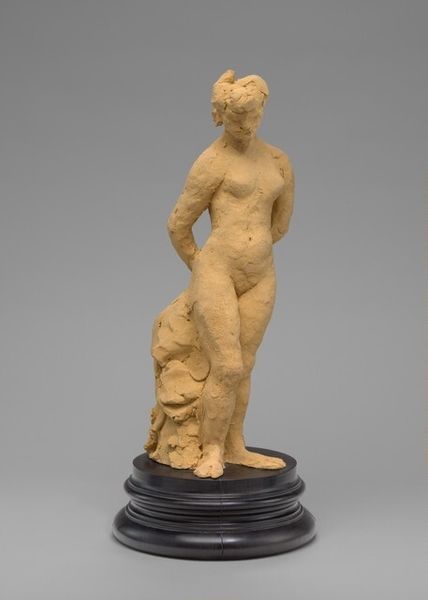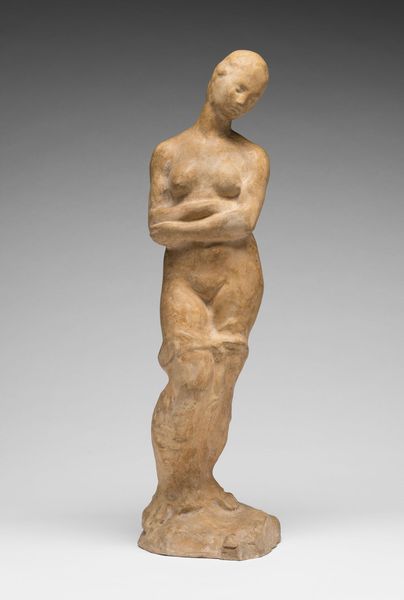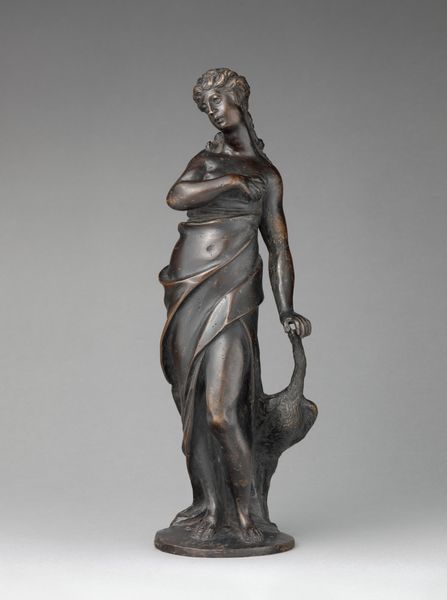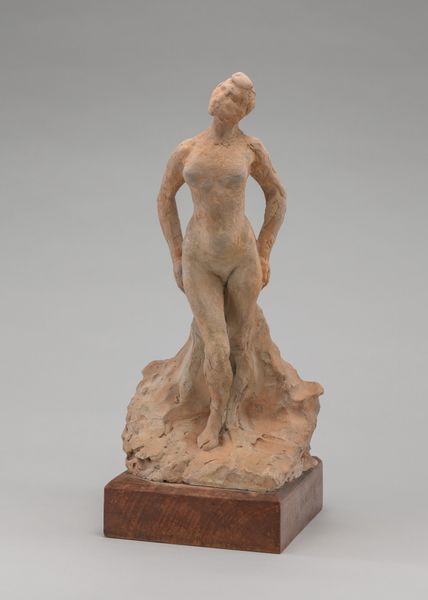
sculpture, marble
#
portrait
#
neoclacissism
#
statue
#
allegory
#
classical-realism
#
figuration
#
sculpture
#
history-painting
#
marble
#
nude
Dimensions: overall: 167.5 × 51.4 × 47 cm (65 15/16 × 20 1/4 × 18 1/2 in.) gross weight: 235.87 kg (520 lb.)
Copyright: National Gallery of Art: CC0 1.0
Hiram Powers created "The Greek Slave" in the mid-19th century, a marble sculpture that sparked significant debate about slavery and artistic license. Powers depicted a nude woman, chained, to address the Greek struggle for independence from the Ottoman Empire, using her captivity as a symbol of their plight. The statue found popularity amidst the abolitionist movement in the United States. While it was ostensibly about Greek independence, its themes of enslavement resonated with American audiences, highlighting the hypocrisy of a nation that championed freedom while practicing slavery. Powers navigated a complex social landscape. He addressed slavery through a classical, idealized form which allowed him to exhibit a nude figure without causing major offense, reflecting the period's conflicted attitudes toward morality and representation. Art historical research reveals how artists like Powers engaged with the pressing social issues of their time, using their work to challenge, reflect, and sometimes, complicate the prevailing norms.
Comments
No comments
Be the first to comment and join the conversation on the ultimate creative platform.
